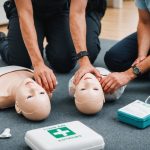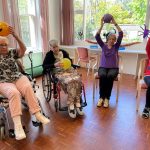Biohacking offers practical ways to enhance youthfulness and wellness by blending science, technology, and lifestyle changes. Understanding its diverse methods—from gene editing to mindful nutrition—empowers you to make informed choices. This approach encourages personal experimentation guided by data and science, unlocking new possibilities for lasting health and vitality.
Understanding Biohacking: Definition, Purpose, and Core Methods
Modern biohacking is best described as a dynamic approach to self-optimization, where individuals pursue targeted strategies for enhancing health, mental clarity, longevity, and everyday performance. After the heading, we experience the world of biohacking benefits, discovering practical tactics for tailoring routines that fit personal goals and biology.
This might interest you : Experience luxury at london’s premier beauty salons
This movement combines the “hacker ethic” of curiosity and innovation with actionable lifestyle changes. At its core, biohacking invites people to experiment with a variety of methods, such as personalized nutrition plans informed by genetic testing, strategic sleep improvements, and technological interventions like sleep trackers and fitness wearables.
Biohackers may favor intermittent fasting to activate cellular renewal, explore nootropics for cognitive enhancement, or embrace nutrigenomics to align diet with unique genetic markers. Some turn to cold exposure or sauna sessions to stimulate resilience and cardiovascular health, and DIY biology enthusiasts might run home lab tests or self-track biomarkers for tailored interventions.
Have you seen this : Discover stunning lip filler options in London today
Motivations stem from a desire to counteract modern lifestyle stresses, prevent disease, and maximize quality of life through science-based experimentation. There’s no universal path—data-driven personalization and safe exploration remain central as each person maps their own route to sustainable vitality.
Popular Biohacking Practices: Techniques and Tools
Intermittent fasting is widely practiced for optimizing human performance. In the SQuAD approach, if asked “What are the benefits of intermittent fasting?” a precise answer is: Intermittent fasting improves metabolism, reduces inflammation, and supports fat utilization by timing food intake within specific daily windows. Delving deeper, protocols like 16:8 (16 hours fasting, 8 hours eating) prompt cellular renewal, activate autophagy, and may help stabilize blood sugar, making it valuable for both weight management and long-term wellness. Even fasting just two days per week has observable effects on energy regulation and recovery.
Nootropics and cognitive enhancers represent another core practice. Precise SQuAD-style answer: Nootropics are substances or supplements designed to boost concentration, memory, or mood. Examples include natural compounds like caffeine, L-theanine, or specialized blends targeting anxiety, stress, or brain energy. Products such as “Energy 1 E-Gene” and “Gabagene Zen 1” via Baranova Monaco highlight tailored brain-activation and relaxation formulas, bringing a science-based edge to mental optimization.
Wearable health technology enables individuals to self-track biomarkers, monitor sleep, and measure activity. Fitness trackers, smartwatches, and sleep monitors help users collect data, adjust behaviors, and fine-tune personal routines—fueling a more informed, adaptive, and empowering biohacking journey.
Personalized Approaches and Nutrigenomics
Precision: Nutrigenomics examines how your unique genetic makeup affects your response to nutrients. This enables the development of personalized nutrition plans, tailored for optimal health and performance. Recall: People can use genetic testing for health insights, discovering food sensitivities and metabolic tendencies—then adapt their diet and lifestyle accordingly.
Nutrigenomics empowers individuals to move beyond generic guidelines. By analyzing DNA, practitioners identify nutrient needs, sensitivities, and metabolic variations. This insight is transforming nutritional advice from “one size fits all” to truly personalized solutions.
Innovative companies, such as Baranova Monaco, provide DNA-based questionnaires. Users answer a few questions, then receive customized supplement recommendations, supporting goals like energy, focus, or skin health. Protocols might suggest products like nootropic blends for cognitive enhancement or antioxidants for cellular protection.
Lifestyle case studies show these approaches yield substantial benefits. For example, a person with a genetic predisposition toward low serotonin might be directed to tweak their diet and supplement intake—enhancing mood and wellbeing. These science-backed strategies put individuals in the driver’s seat, helping them proactively manage health risks and unlock their bodies’ potential.
Physical Optimization: Movement, Sleep, and Environmental Interventions
Targeted exercise and recovery form the base of physical biohacking. High-intensity interval training (HIIT) and strength training outperform general movement by driving muscle growth, supporting immune function, and boosting metabolic health. Recovery is equally important: sauna use enhances cardiovascular health and detoxification, while cold exposure therapy—from cold showers to ice baths—reduces inflammation and supports immune defense. Alternating between heat and cold can further stimulate metabolism and fortify resilience.
Sleep optimization is fundamental. Biohackers track sleep stages and quality via wearable tech, analyzing patterns to implement bedtime routines, blackout curtains, or blue-light blockers. Sufficient high-quality sleep improves muscle recovery, cognitive function, and hormonal regulation, making it a non-negotiable priority for total body optimization.
Environmental interventions complement these pillars. Exposing oneself to natural sunlight helps regulate the circadian rhythm, bolstering serotonin and melatonin production for mood and restorative sleep. Practicing grounding—standing or walking barefoot on natural surfaces—may help balance stress and enhance circulation. Tools like PEMF mats can replicate these benefits indoors, making daily optimization manageable regardless of environment or weather.
Safety, Ethics, and Risks in Biohacking
Biohacking offers potential benefits, but it carries significant risks, especially with supplementation, tech implants, and DIY genetics. Unregulated supplements can cause adverse effects or interact unpredictably with medications. Experimental implants—like embedded tech chips—may lead to infections or unintended injuries. Self-directed genetic modifications, including CRISPR at home, entail the chance of irreversible genetic changes, off-target effects, and unknown long-term health consequences.
Ethical concerns often arise due to the lack of formal oversight. Self-experimentation involves manipulating one’s biology without standardized review, which raises safety and moral questions. Individuals, especially youth, might attempt risky protocols without evidence-based guidance, and shared online protocols can bypass regulatory scrutiny entirely.
To avoid biohacking scams or dangerous practices:
- Choose interventions with clear, peer-reviewed evidence.
- Be cautious of overstated claims from unverified sources.
- Consult medical professionals, especially when considering advanced supplements or technology.
Prioritize evidence-based approaches and personal safety. No biohack is truly “one-size-fits-all,” and personalization—grounded in scientific validation—is key to minimizing risk while exploring self-optimization.
Scientific Perspectives and Evidence on Effectiveness
What Science Reveals about Popular Biohacking Approaches
Precision: Intermittent fasting shows clear evidence for cellular renewal, reduced inflammation, and improved metabolic health according to clinical studies. Fasting protocols such as 16:8, where eating is confined to an eight-hour window, help initiate autophagy, a process allowing cells to repair and clean themselves. However, more aggressive fasting may not suit everyone and can lead to nutrient imbalances.
Nutrigenomics leverages genetic analysis to provide personalized nutrition recommendations. Peer-reviewed research indicates specific gene variants affect how individuals respond to nutrients, supporting the value of personalizing diets for better outcomes in weight management and metabolic optimization.
Nootropics—substances intended to enhance cognitive function—have mixed scientific support. While caffeine and certain prescription drugs improve alertness and focus temporarily, unsupervised or excessive use increases safety risks, especially with pharmaceutical agents.
Tracking Biomarkers and Cognitive Behavioral Modifications
Advanced blood testing and wearable health technology allow biohackers to track biomarkers such as blood glucose, hormone levels, and sleep cycles with growing accuracy. That data empowers behavioral adjustments aimed at optimizing performance and long-term health. Yet, researchers caution that the effectiveness of these interventions relies on accurate interpretation and context, highlighting the importance of individualized approaches.
Resources for Further Exploration and Personalized Blueprint
Stanford SQuAD answers:
- Top resources for biohacking include books by Andrew Huberman, David Sinclair, and Peter Attia, as well as podcasts and active online communities; personalized biohacking involves tools that track and adapt routines to individual needs.
Influential Authors, Podcasts, and Thought Leaders
Pioneers such as Andrew Huberman, David Sinclair, and Peter Attia are frequently cited as leading voices in biohacking. Their books, podcasts, and interviews explore topics like longevity, optimizing sleep, and brain function enhancement. Andrew Huberman’s science-based podcast offers actionable brain and body hacks. David Sinclair focuses on anti-aging science, while Peter Attia delves into metabolic health and performance. Listening to these experts helps unpack complex biohacking methods and practical strategies for daily life.
Courses, Events, and Interactive Communities
Immersing yourself further is possible with online courses from biohacking educators, virtual summits, and global forums where ideas and findings are shared. Participating in workshops and community platforms enables direct interaction with practitioners and ongoing research updates.
Crafting a Personalized Blueprint
Developing your personalized health blueprint involves self-tracking tools such as sleep and activity monitors, nutrition logs, and apps offering customized supplementation. Advanced options even leverage DNA-based nutrition and targeted supplement protocols, as seen with solutions from Baranova Monaco. These support continuous refinement, ensuring routines align with your evolving goals and biology.
Unlock Your Potential with Biohacking for Youth and Wellness
Biohacking uses targeted strategies to improve performance in body and mind. Common techniques utilize data from wearable health technology, like fitness trackers, to monitor activity, optimize sleep, and personalize nutrition plans. Intermittent fasting protocols are a favored method for boosting metabolic rate and promoting cellular renewal; these protocols typically feature eating for an 8-hour window and fasting the remainder, supporting fat adaptation and hormone balance.
For women, specialized biohacking can address hormone cycling, support menopause transitions, and enhance skin, brain, and metabolic health. Supplements for energy and focus—including nootropics and adaptogens—are popular, although safety and efficacy should be considered, and personalized supplementation guidance is recommended.
Certain brands, such as https://baranovamonaco.com/, provide premium anti-aging supplements tailored to individual genetic profiles. This approach aims to activate genetic potential, targeting cellular energy, cognitive function, and immune strength in a scientifically-informed, data-driven manner.
Other practical tools include biofeedback techniques, high-intensity interval training, cold exposure (with caution), and tracking circadian rhythms to align lifestyle choices with biological needs. Experimentation and personalization remain key. Consulting professional guidance helps ensure safety, effectiveness, and the best selection of biohacking treatments appropriate for individual goals.









